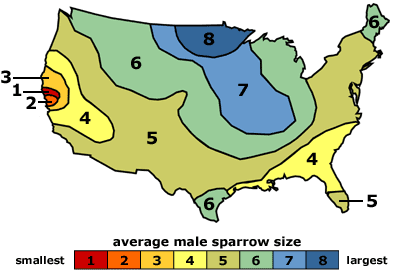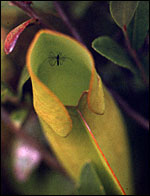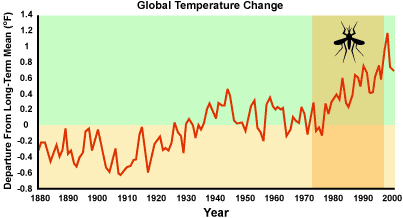Microevolution is defined as a change in gene frequency in a population. Because of the short timescale of this sort of evolutionary change, we can often directly observe it happening. We have observed numerous cases of natural selection in the wild, as exemplified by the three shown here.
The size of the sparrow
House sparrows were introduced to North America in 1852. Since that time the sparrows have evolved different characteristics in different locations. Sparrow populations in the north are larger-bodied than sparrow populations in the south. This divergence in populations is probably at least partly a result of natural selection: larger-bodied birds can often survive lower temperatures than smaller-bodied birds can. Colder weather in the north may select for larger-bodied birds.

As this map shows, sparrows in colder places are now generally larger than sparrows in warmer locales. Since these differences are probably genetically based, they almost certainly represent microevolutionary change: populations descended from the same ancestral population have different gene frequencies.

Coping with global warming
We observe natural selection following many human-induced changes in the environment. For example, global warming has caused slightly higher temperatures and longer summers. What are the evolutionary effects of this environmental change? We are just beginning to figure out the answers to this question as new data are collected.

Consider the potential effect of global warming on organisms that are dormant during the winter. These organisms stop growth and reproduction during the winter. They would probably be more “fit” if they could spend more of their time reproducing and gathering resources for reproduction, but the low temperatures don’t allow it. However, global warming would allow them to do just that: spend more time growing and reproducing — but taking advantage of this opportunity is likely to require evolutionary change.
The mosquito species Wyeomyia smithii, shown here in a pitcher plant, has evolved in response to global warming. Mosquitoes use day length (not temperature) as a cue to tell them what time of year it is and when to overwinter — this “cuing” is genetically controlled. In a warmer climate with shorter winters, we’d expect mosquitoes that waited a little longer to go dormant to have higher fitness and be selected for. And in fact, researchers who have been collecting data on these mosquitoes for almost 30 years have observed exactly this sort of change. Mosquito populations have evolved so that slightly shorter days are required as a cue for going dormant.

Building resistance

Pesticide resistance, herbicide resistance, and antibiotic resistance are all examples of microevolution by natural selection. The enterococci bacteria, shown here, have evolved a resistance to several kinds of antibiotics.
Learn more about microevolution that has occurred in response to global warming: Warming to evolution, a news brief with discussion questions.
Learn more about the evolution of resistance:
Find lessons, activities, videos, and articles that focus on the evolution of antibiotic resistance.
